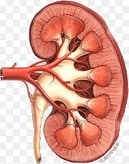
Asking the right questions: Measuring the impact of pharmacovigilance
pharmafile | October 16, 2017 | Feature | Business Services, Manufacturing and Production, Medical Communications, Research and Development, Sales and Marketing | drug safety, pharma, pharmacovigilance
Are our pharmacovigilance measures as effective as we think? And why is it important to answer that question, especially now? Matt Fellows investigates the projects underway to ensure we’re headed in the right direction.
As the Western world finds itself facing some of its most disruptive challenges in recent memory, so too do the pharmaceutical and healthcare industries. The issue of patient access has always been a part of national and global conversation – no medical professional in good conscience would deny someone access to life-saving medication without compelling reason, and patient safety is a crucial part of this discussion.
Regulation and its relationship to promoting safety has been a hot topic in health and pharma news since President Trump took office, with him threatening to force a lowering of drug prices and promising to accelerate access to life-saving medicines even before he won the election.
On the topic, Trump said: “We’re going to be cutting regulations at a level that nobody’s ever seen before,” and that his administration would be aiming to slash 75% of current federal regulation – which in total corresponds to over 178,000 pages of rules – with the aim of cutting ‘unnecessary’ red tape and bring life-saving medicines to the patients that need them at a much faster rate than has been achieved previously. To this end, Trump took steps early in his presidency to limit or reduce the amount of regulations in the FDA’s systems by introducing a ‘one-in, two-out’ rule, meaning those wishing to submit a new piece of regulation must first rescind two existing ones.
While this may seem a justified endeavour in theory, the reality of the situation is, of course, much more complex, and the industry was quick to respond and point out the fallacy in this school of thought. Professor John E. J. Rasko, Head of the Department of Cell and Molecular Therapies at Royal Prince Alfred Hospital in Sydney, Australia, argues that such approaches erroneously assume that the FDA and other drug regulatory agencies are unnecessarily and excessively cautious on a systematic level when it comes to the issue of patient safety and access. Opponents of this level of regulation argue that the cost of pre-market safety testing is greater than the benefits to patients.
“They argue that potentially harmful drugs can be identified quickly after they go on sale, and that the FDA runs an overly stringent system that withholds or delays safe and effective drugs from patients,” stated Professor Rasko. “Even in the past dozen years, initially promising drugs, such as torcetrapib (for reducing cholesterol and heart-disease risk) and semagacestat (for improving cognition in people with Alzheimer’s disease), were found to cause harm only after they had been tested in large, mandatory trials — effects that were not seen in the smaller trials.”
“Rigorous clinical studies are still the best way to learn whether a drug works, and regulation is essential to ensure that these studies are conducted,” he added.
While the President’s statements in this area may have sunk below the surface in more recent times, he has nonetheless made a significant move towards this end with the appointment of Scott Gottlieb to the role of Commissioner of the FDA. He has been given the mandate to refine the regulatory agency’s process, but how this will affect the safety of US patients, in the long term, remains to be seen.
What is being done?
These recent events alone highlight the crucial role that pharmacovigilance and risk assessment plays in the industry today, and have elevated these issues to an even more prominent place in global drug manufacturing and patient treatment. While Trump and his team come under fire for perhaps failing to grasp the true and uncompromised essentiality of patient safety, the experts on the other side of the Atlantic have recognised this, as well as the importance of striving for ever-greater performance. The FDA’s European counterpart, the EMA, has been hard at work in this area long before the issue found its way back to prominence.
“The European Union (EU) pharmacovigilance system has been designed to promote the safe and effective use of medicines by providing reliable information for the assessment of the benefit-risk profile of marketed medicines and the minimisation of risks,” Dr Thomas Goedecke, Principal Scientific Administrator, Pharmacovigilance and Epidemiology Department at the EMA, told [Pharmafocus]. “The main objectives of the system are to promote and protect public health by supporting the availability of safe and effective medicines, including those that fulfil previously unmet medical needs, and by reducing the burden of adverse drug reactions. These are achieved through a proactive, risk proportionate and patient-centred approach, with high levels of transparency and engagement of civil society.”
The agency’s primary vehicle for this is its Pharmacovigilance Risk Assessment Committee (PRAC), which is responsible for “prioritising and assessing safety signals, providing recommendations to maintain a positive benefit-risk balance and all other aspects of the risk management of medicinal products, thus ensuring that medicines approved for marketing in the European Union are optimally used,” according to Dr Goedecke.
The committee works to ensure that pharmacovigilance processes are fully integrated and embedded into the product lifecycle, beginning before the drug even hits the market and continuing to run post-authorisation. In the EU’s regulatory system, this can include systematic data collection from a number of sources, including spontaneous reports of adverse drug reactions or monitoring of real-world data. The agency then enforces a high standard of pharmacovigilance through the issuing of Good Pharmacovigilance Practices (GVP) in collaboration with national competent authorities, which stakeholders are obligated to follow.
But to simply monitor the safety profiles of medicines pre- and post-market has been deemed not enough; experts are increasingly turning their attentions inwards to evaluate and verify whether assessment methodologies are robust and efficient enough to meet the highest standards, in order to keep patients safe.
Asking the right questions
“Measuring the impact of pharmacovigilance activities, auditing and inspections, as well as capacity building ensures that the EU pharmacovigilance system undergoes continuous improvement and can always rely on the best methodologies to safeguard public health,” Dr Goedecke noted. “For this purpose, in 2016 a strategy has been adopted by PRAC to establish an approach for measuring the impact of pharmacovigilance activities which is based on the generation of data, information and knowledge on major product-specific regulatory actions, on key pharmacovigilance activities and on ‘enabling’ factors.”
The strategy in question is the [Strategy on Measuring the Impact of Pharmacovigilance Activities], or EMA/790863/2015, established as an approach for assessing the efficacy of methods to deliver data, information and knowledge on major specific product-related actions on key pharmacovigilance processes and enabling factors.
As Dr Goedecke notes, the strategy’s four pillars include:
i) Effectiveness of risk minimisation measures
ii) Effectiveness of pharmacovigilance processes
iii) Enablers of effective pharmacovigilance
iv) Robust methods for measuring impact
To implement this strategy the Agency has established the PRAC Interest Group (IG) Impact which closely collaborates with the European Network of Centres for Pharmacoepidemiology and Pharmacovigilance (ENCePP) Special Interest Group (SIG) on measuring the impact of pharmacovigilance activities.
ENCePP SIG Impact was set up to complement the work of the PRAC IG in the identification and development of methodological approaches for impact research – the fourth pillar of the PRAC impact strategy. To this end, the group enlisted the cooperation of EnCePP partners who expressed interest in collaborating in this area, forming an alliance of 24 people and organisations.
Among these was the Drug Safety Research Unit (DSRU), an independent academic unit and registered charity that specialises in observational post-marketing studies and the same company established by the originator of the UK’s Yellow Card system for spontaneous reporting of adverse drug reactions, Dr Bill Inman.
[Pharmafocus] spoke to Dr Liz Lynn, Head of Scientific and Educational Development at DSRU, to get a picture of the calibre of partners that ENCePP SIG Impact has brought on board.
“We have conducted observational post-marketing studies on over 120 medicines and in recent years have undertaken post-authorisation safety studies for risk management plans on many new medicines in both primary and secondary care using our event monitoring methodology and our long-standing links with the NHS,” Dr Lynn explained. “However, the Unit carries out many other activities including European network studies, consultancy in pharmacovigilance, pharmacoepidemiology and risk management, as well as risk minimisation activities, registries, drug utilisation and more. We have a nimble, expert team of epidemiologists, medics, pharmacists and biomedical scientists with an in-depth understanding of what regulators require.”
Pushing for progress
The work conducted by the PRAC IG Impact and ENCePP SIG Impact groups is instrumental in the frontline evaluation and improvement of pharmacovigilance process. But in such a complex field, how do we define whether these methodologies are effective in order to accurately assess them?
“To measure the success of pharmacovigilance activities, first one needs to define what success stands for and this will vary depending on the choice of regulatory tools and stakeholder groups targeted by a particular regulatory action, taking also into account differences in the implementation of regulatory actions in EU Member States’ health care systems,” states Dr Goedecke. “Therefore, each individual pharmacovigilance activity may have different success factors which need to be clearly defined, and this definition will also influence the analytical approach – study design, data source, and choice of outcome measure, for example – for measuring impact.
“One of the ENCePP SIG members’ ongoing projects describes for a range of selected safety risks the pharmacovigilance processes and steps leading to regulatory actions based on a literature review with the aim to identify gaps in the availability of data required for measuring impact. This project is expected to provide recommendations on data requirements for impact evaluation and success factors for relevant pharmacovigilance processes.”
The PRAC strategy has been driven by recommendations made at an international stakeholder workshop on measuring the impact of pharmacovigilance activities, which were then incorporated into the multi-annual work plan of the two groups.
Dr Goedecke went on to outline some of the key ways in which these missions are being carried out.
“Key developments of the PRAC IG Impact include a checklist with criteria to prioritise safety topics for collaborative impact research at PRAC level, and setting up of a process to prospectively identify areas which require collaborative impact research,” he explained. “Such studies conducted by the EU regulatory network aim to generate data to monitor the impact of regulatory interventions in public health terms beyond the data submitted by marketing authorisation holders in context of regulatory procedures.
“An example is the Article 31 referral concluded in 2013, where restrictions on use of codeine for pain relief in children have been implemented,” he continued. “A collaborative study is ongoing that investigates the impact of these restrictions on prescribing trends of codeine in children based on drug utilisation data in several Member States by means of a common protocol.
“The Agency has also commissioned two studies of the impact of regulatory communication and risk awareness following the Article 31 referral of combined hormonal contraceptives in relation to thromboembolism concluded in 2014, which are ongoing.”
Targeting the right metrics
A key focus of this mission to accurately measure the impact of pharmacovigilance lies on assessing the direct effect it has on morbidity and mortality, which provides a clear picture on how these methods are having an effect in real terms. In particular, it is designed to reveal whether they are having a positive impact on the number of patients who are seriously diseased or have died from their condition. Moving into 2017, the ENCePP SIG Impact is doubling down on its efforts to shed light in this area.
“In 2017 the ENCePP SIG Impact has started work on a concept paper for a new chapter on methodologies for impact research to be included in the next revision of the [ENCePP Guide on Methodological Standards in Pharmacoepidemiology],” Dr Goedecke said. “This new chapter will focus on methods such as predictive modelling of drug utilisation data to measure changes in morbidity or mortality, interrupted time series regression analysis which is a method increasing used in published impact research, methods for the validation of health outcomes in routinely collected healthcare data and real time monitoring of drug use in population-based electronic health records with the aim to identify patterns of drug use.”
The DSRU has been contributing to this end with its own research, as Dr Lynn described:
“Our study has two phases. During the first phase we investigated the evidence supporting post-marketing withdrawals and suspensions of prescription products due to safety in the EU in the period from 1 July 2012 to 31 December 2016. This built on two previous DSRU studies to investigate the evidence to support product withdrawals in earlier time periods. This phase is now complete and submitted for publication. The second phase is now underway, which is to measure the impact that pharmacovigilance activities have had on the public health burden in the EU in terms of serious morbidity and mortality. We are using modelling techniques to predict the impact of drug withdrawal or other pharmacovigilance actions on public health.”
Dr Lynn touches on an important point: not only does increased efficacy of pharmacovigilance processes help to minimise or prevent tragic and often preventable loss of human life, but also works to alleviate the financial and human resources burden that these conditions place upon often already overstretched health services.
Scrutinising the system
The report generated from the international stakeholder workshop mentioned by Dr Goedecke also highlighted a number of issues which reinforce the notion that this project to measure the effectiveness of pharmacovigilance processes is an important one. Among other things, Dr Goedecke notes that the report brought to light: “the shortcomings of traditional pharmacovigilance processes and their contribution to public health protection – for example regulatory and operational challenges of survey studies measuring the effectiveness of product-specific risk minimisation and feasibility of post-authorisation safety studies.
“A number of practical and methodological challenges of impact research relate to external factors – different national healthcare policies for example – which influence how regulatory measures taken at EU level are implemented locally. These uncertainties are yet to be addressed and integrated in future decision making processes.”
The importance of identifying these shortcomings cannot be overstated, and underline the very crux of why this work is being carried out. The findings of the report illustrate that current pharmacovigilance measures are not achieving the impact which is needed and know they are able to meet. If anything, they send the clear message that more work is needed.
There’s still more to be done
In spite of all this ongoing labour, accurately quantifying the effects of pharmacovigilance methods still remains a difficult task, with definitive methodologies still being perfected, especially when it comes to measuring the impact on rates of morbidity and mortality, as Dr Goedecke points out:
“Whilst pharmacovigilance legislation was found to lead to faster changes to product labelling and conclusion of safety referrals, to demonstrate that these changes translate into effects on public health in terms of reducing serious morbidity and mortality presents a challenge. Nearly 50 years after the creation of the first national programmes for pharmacovigilance the methodologies for measuring the impact of pharmacovigilance on public health are still being developed.”
It has thus far been a long road, with many more obstacles still to be confronted, but the important work being done in this area plays a crucial role in pushing us ever closer to the engineering of a robust framework to provide greater patient safety, particularly in serious medical circumstances. But, looking forward, where do we need to aim for next? Dr Lynn feels that although we have come a long way in just a few years, there is still work to be done in raising the profile of pharmacovigilance, communicating its necessity and importance to patients and medical professionals alike to further reinforce these assessment efforts – with this stance of increasing importance after Trump’s previously mentioned comments.
“The EU pharmacovigilance landscape has continued to evolve since the European legislation was updated in 2012, with ongoing consultations and revision of GVP modules, including this year the update to GVP Module V amongst others,” she noted. “The pharmacovigilance field has also seen progress in signal detection and management and risk management, continued recognition of the importance of risk minimisation and methods to monitor the effectiveness of risk minimisation measures, increasing use of registries and growing awareness of methods to harness Big Data to best effect for pharmacovigilance.”
She continued: “In order to achieve greater safety for patients, I think we need to raise awareness of the concept of drug safety amongst both patients and physicians. Patients need to be made aware that they can report a suspected adverse drug reaction via the Yellow Card system. Doctors also need to be mindful that adverse events may occur in their patients. Many physicians are only exposed to spontaneous reporting/Yellow Card when it is mentioned in a lecture at medical school and subsequently give it little thought amongst the myriad of other priorities they have. We would like to see drug safety having greater emphasis during medical training and subsequently as a continual part of professional development.”
Dr Goedecke echoes these sentiments. While much of the battle is fought via the work conducted by PRAC and the special interest groups, the need to dedicate efforts to challenge and shift attitudes on a personal level cannot be underestimated.
“Another important area are enablers of effective pharmacovigilance and how to better engage patients and healthcare professionals in the evaluation of risk minimisation measures, taking into account competencies and attitudes required to improve health literacy and to change health behaviours,” he asserts. “The public hearing on valproate-containing medicines that will be held at EMA on 28 September 2017 will provide the opportunity for a case study with recommendations on active engagement and capacity building and to better understand potential barriers to regulatory safety communication achieving the intended effects.”
As for the future of these pharmacovigilance projects and the effect they are imposing on the shape of medical safety and efficacy, and therefore on patient health, Dr Goedecke places his faith firmly in the potential of EMA/790863/2015 together with the combined efforts of the special interest groups. Strategies such as these show great promise in the field, and the constant focus on self-improvement is crucial in ensuring future success – a stark contrast to the arguably dismissive attitude adopted by the Trump administration that mandatory pharmacovigilance processes are unnecessary or ineffectual.
He confidently concludes: “As the implementation of a revised PRAC impact strategy continues, guidance and tools will become available to further strengthen the EU regulatory network’s ability for measuring impact and to promote best practice amongst stakeholders of pharmacovigilance across the EU. The four pillars of the strategy – effective risk minimisation, effective processes, enablers of stakeholder engagement and robust methodologies – provide the foundation for effective and efficient pharmacovigilance in the future.”
Matt Fellows
Related Content

FDA approves IMIDEX’s AI-powered device VisiRad XR
The technological pharmaceutical company IMIDEX has been granted clearance from the US Food and Drug …

Artiva Biotherapeutics announces FDA clearance of IND for AlloNK and Rituximab combo
On 16 August 2023, the US Food and Drug Administration (FDA) officially cleared Artiva Biotherapeutics’ …

Novartis acquires Chinook Therapeutics for $3.5bn
Swiss pharmaceutical company Novartis has entered into an agreement and plan of merger with US-based …








